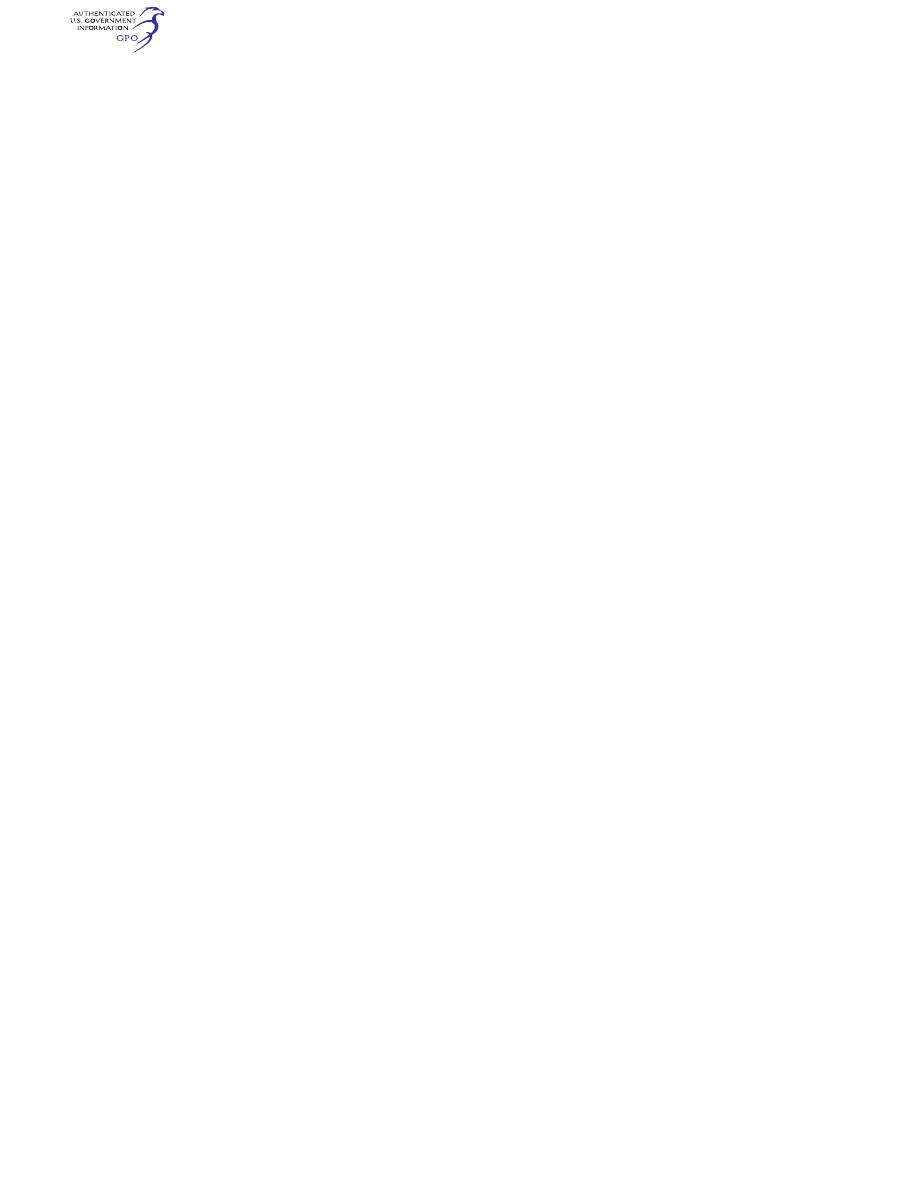
635
Federal Aviation Administration, DOT
§ 29.965
§ 29.957
Flow between interconnected
tanks.
(a) Where tank outlets are inter-
connected and allow fuel to flow be-
tween them due to gravity or flight ac-
celerations, it must be impossible for
fuel to flow between tanks in quan-
tities great enough to cause overflow
from the tank vent in any sustained
flight condition.
(b) If fuel can be pumped from one
tank to another in flight—
(1) The design of the vents and the
fuel transfer system must prevent
structural damage to tanks from over-
filling; and
(2) There must be means to warn the
crew before overflow through the vents
occurs.
§ 29.959
Unusable fuel supply.
The unusable fuel supply for each
tank must be established as not less
than the quantity at which the first
evidence of malfunction occurs under
the most adverse fuel feed condition
occurring under any intended oper-
ations and flight maneuvers involving
that tank.
§ 29.961
Fuel system hot weather oper-
ation.
Each suction lift fuel system and
other fuel systems conducive to vapor
formation must be shown to operate
satisfactorily (within certification lim-
its) when using fuel at the most crit-
ical temperature for vapor formation
under critical operating conditions in-
cluding, if applicable, the engine oper-
ating conditions defined by § 29.927(b)(1)
and (b)(2).
[Amdt. 29–26, 53 FR 34217, Sept. 2, 1988]
§ 29.963
Fuel tanks: general.
(a) Each fuel tank must be able to
withstand, without failure, the vibra-
tion, inertia, fluid, and structural loads
to which it may be subjected in oper-
ation.
(b) Each flexible fuel tank bladder or
liner must be approved or shown to be
suitable for the particular application
and must be puncture resistant. Punc-
ture resistance must be shown by
meeting the TSO-C80, paragraph 16.0,
requirements using a minimum punc-
ture force of 370 pounds.
(c) Each integral fuel tank must have
facilities for inspection and repair of
its interior.
(d) The maximum exposed surface
temperature of all components in the
fuel tank must be less by a safe margin
than the lowest expected autoignition
temperature of the fuel or fuel vapor in
the tank. Compliance with this re-
quirement must be shown under all op-
erating conditions and under all nor-
mal or malfunction conditions of all
components inside the tank.
(e) Each fuel tank installed in per-
sonnel compartments must be isolated
by fume-proof and fuel-proof enclosures
that are drained and vented to the ex-
terior of the rotorcraft. The design and
construction of the enclosures must
provide necessary protection for the
tank, must be crash resistant during a
survivable impact in accordance with
§ 29.952, and must be adequate to with-
stand loads and abrasions to be ex-
pected in personnel compartments.
[Doc. No. 5084, 29 FR 16150, Dec. 3, 1964, as
amended by Amdt. 29–26, 53 FR 34217, Sept. 2,
1988; Amdt. 29–35, 59 FR 50388, Oct. 3, 1994]
§ 29.965
Fuel tank tests.
(a) Each fuel tank must be able to
withstand the applicable pressure tests
in this section without failure or leak-
age. If practicable, test pressures may
be applied in a manner simulating the
pressure distribution in service.
(b) Each conventional metal tank,
each nonmetallic tank with walls that
are not supported by the rotorcraft
structure, and each integral tank must
be subjected to a pressure of 3.5 p.s.i.
unless the pressure developed during
maximum limit acceleration or emer-
gency deceleration with a full tank ex-
ceeds this value, in which case a hydro-
static head, or equivalent test, must be
applied to duplicate the acceleration
loads as far as possible. However, the
pressure need not exceed 3.5 p.s.i. on
surfaces not exposed to the accelera-
tion loading.
(c) Each nonmetallic tank with walls
supported by the rotorcraft structure
must be subjected to the following
tests:
(1) A pressure test of at least 2.0 p.s.i.
This test may be conducted on the
tank alone in conjunction with the test
VerDate Sep<11>2014
09:06 Jun 28, 2024
Jkt 262046
PO 00000
Frm 00645
Fmt 8010
Sfmt 8010
Y:\SGML\262046.XXX
262046
jspears on DSK121TN23PROD with CFR
